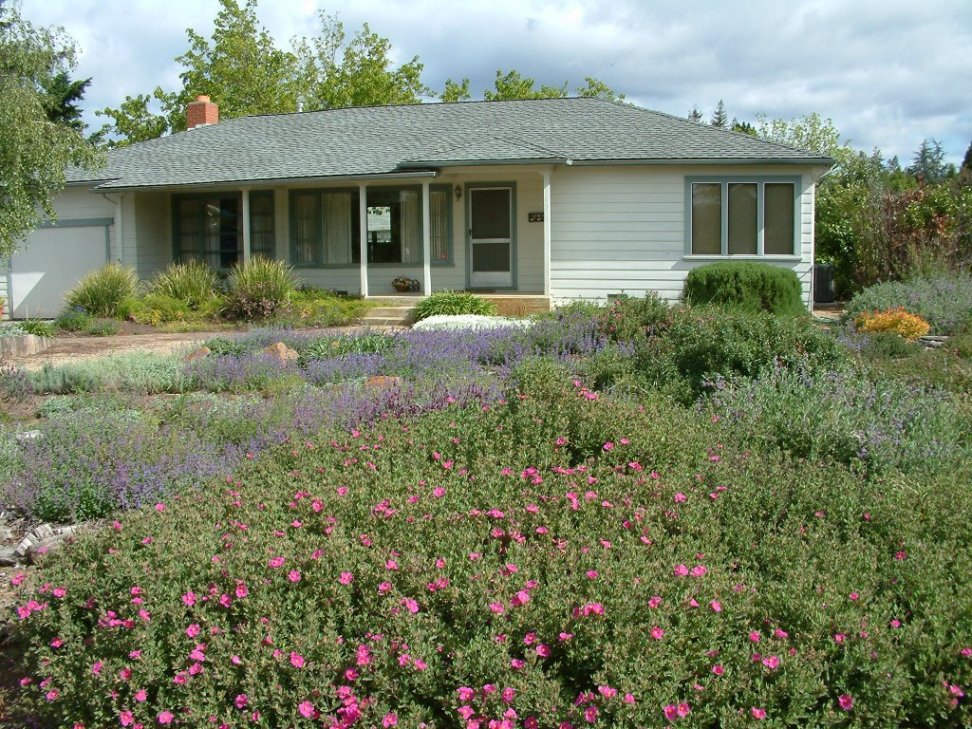
Common name:Ligtu Peruvian Lily
Botanical name:Alstroemaria ligtu hybrids
The decidupous rhizomes of this Peruvian lily will often run aggressively if not controlled. They grow best in full to part sun with some summer watering in dry climates. The florist strains can reach 6' tall, while the compact strains range from 12-36" For extra long, florist quality stems, stake or grow through netting for support. -Monterey Bay Nursery

Common name:Tuscan Blue Upright Rosemary
Botanical name:Rosmarinus officinalis 'Tuscan Blue'
The upright Rosemary is an upright shrub that grows 3-6 ft. tall. It has dark green leaves and bright showy lavender-blue flowers throughout the year. This shrub is drought tolerant and attracts butterflies. -Cornflower Farms

Common name:Orchid or Purple Rockrose
Botanical name:Cistus X purpureus
Orchid rockrose. Evergreen shrub growing to 4' tall and wide, often shorter in stressful situations. The rosy-crimson flowers to 3" wide exhibit a dark purple blotch at the base of each petal, and bloom early to mid-summer. The flowers also feature a contrasting yellow cluster of stamens in the center. A fine choice for a limiting environment of salt spray and cool winds. Relatively long-lived, tolerant of heat and aridity as well as accepting many soil conditions. -Native Sons Nursery

Common name:Catmint
Botanical name:Nepeta X faassenii
Nepeta faassenii makes soft, gray-green, undulating mounds o 1.5 ft. high in bloom. The small leaves are attractive to cats. This perennial has lavender blue flowers in late spring, and early summer.

Common name:Butterfly-Iris, Fortnight Lily
Botanical name:Dietes iridioides
This clumping evergreen iris bears tall, narrow leaves to 30" tall and white flowers marked purple in the center on stalks to 3' tall. This variety has stiffer, darker foiliage than the bicolor form. It requires sun to part shade with little or no summer watering when established. Reseeds vigorously.
| Designer: | Rockrose Front Yard |
Photographer: GardenSoft |
Soils and Compost:
Physical weed control, including mulching, or hand removal protects the watershed from harmful chemicals.
Water Saving Tip:
Water trees and shrubs by deep-soaking occasionally with low-volume irrigation equipment (drip, micro-sprays, or bubblers) to promote healthy, deep rooting.
Integrated Pest Management:
Develop healthy soil for plants that are vigorous and naturally pest-resistant.

